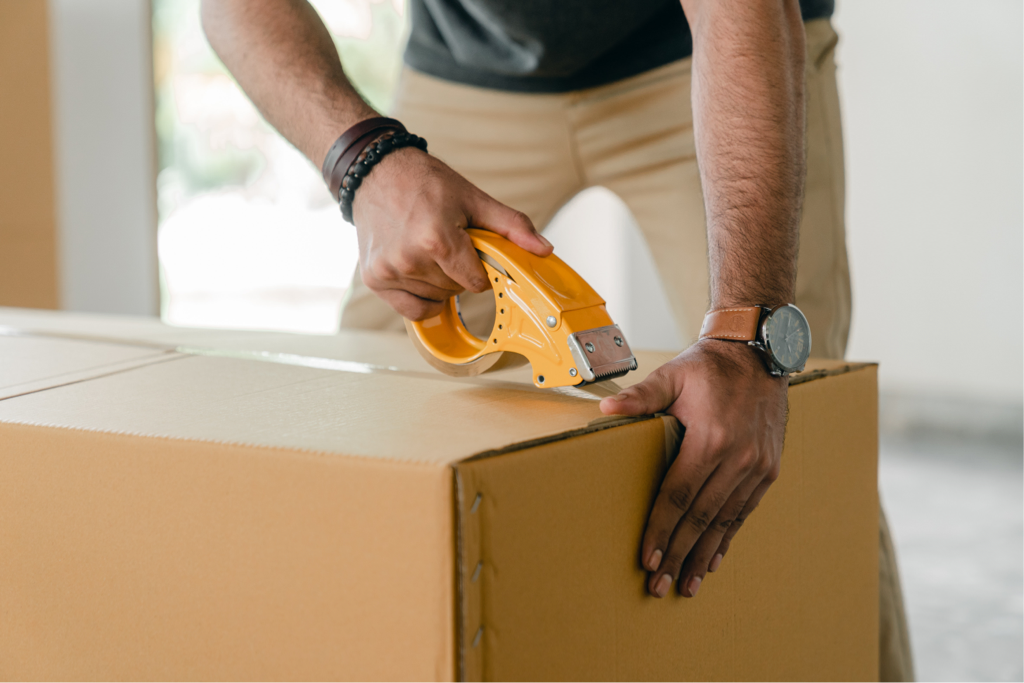3 Ways for Ecommerce Businesses to Save on Shipping Costs

Estimated reading time: 5 minutes
If you run your own ecommerce business you’ll know all too well that there are many costs involved. One of these, of course, is the whole process of dispatch and final mile shipping to your customer – and shipping is rarely cheap. In fact, this ongoing expense is likely to be one of the highest costs that you’ll incur during the running of any ecommerce business.
With numerous factors not under your direct control, such as carriers raising prices as fuel costs and inflation surge, supply chain issues delaying inventory and ever-changing customer expectations (to name just a few), it’s no secret that it’s becoming increasingly challenging to run an online business.
These challenges and increasing costs are being further exacerbated by the post Covid/post Brexit staff shortages heavily impacting both the warehousing and the courier sectors.
With these challenges, in order to stay competitive and maintain your brand’s reputation, you’ll still need to find ways to supply your customers with their purchases both efficiently and cost-effectively. It doesn’t matter how good your products are, most customers will baulk at ‘expensive’ P&P or be put off by unreasonably long or unspecified lead times, so you must get this right.
Your shipping costs will depend on several factors such as delivery speed, your customers location and the weight and size of your packages.
From negotiation to packaging to outsourcing, this article will explore three ways that ecommerce businesses can save on their dispatch and shipping costs, helping you to navigate this difficult landscape and remain competitive in tough times!
1. Search out the best pricing
Many ecommerce businesses (particularly those on the smaller side) assume that their shipping volume is not high enough to qualify for shipping discounts. However, it’s important to be aware that you don’t always need to be a massive company to get a better rate!
Rather than just accepting headline ‘normal customer’ pricing, even if you’re making as few as 100 shipments a month, discounts are often available or can be negotiated with your shipping provider. When you reach out to a courier be sure to have your numbers to hand, such as shipping volumes, frequency, average size and weight.
It’s also worth ‘shopping around’ and negotiating with multiple different carriers to find the best deal. If an existing provider knows that you’re considering switching, they may be more likely to cooperate and reduce or maintain your shipping costs to keep your business.
As a word of warning always make sure that you are comparing services like for like from different providers. Are there possible penalties for not achieving forecast volumes? Will the courier collect from you, and if so at what time of day? What level of insurance is included for loss or damage? Are charges based on actual weight or volumetric weight? As with all things business related you really need to read all the small print. Never assume it’s all just ‘standard’ stuff. Every penny counts so you need to understand all likely or possible costs upfront and how to avoid these or pass them on to the purchaser at the time of sale.
2. Packaging & labels
One of the most crucial aspects of shipping is of course the packaging. When it comes to how you pack your parcels, there are several ways to cut costs and reduce shipping expenses.
Shipping Labels
The first and most straightforward of these is to print your own shipping labels at ‘in-house’. Keep in mind that different carriers will have various different rules regarding this, but once you understand them, you can often cut costs by printing labels ‘in-house’. Certain carriers also have software which can integrate with your own ‘tech’ making this process even easier.
Also carefully consider if a packing note or invoice is required within the parcel. Most customers already have all the information they need from your emails, and if your return instructions are clearly shown on your website or App, a packing note could be an unnecessary hassle and cost and just become extra waste.
Dimensional Weight
Next, make sure you consider ‘dimensional’ or ‘volumetric’ weight. Dimensional weight is a fairly recent concept; as such, many small businesses aren’t aware or don’t fully understand it. Essentially, carriers used to charge their prices depending on the weight of an item. However, larger (yet lighter) packages take up lots of space despite not weighing very much.
As a result, many couriers now apply charges which take into account the volume of the package, not just the weight. If your parcels tend to weigh less than their ‘dimensional weight’, the cheapest way to ship them will often be to find a carrier that does not follow this practice.
Size Matters
Be aware of the size and weight restrictions of your courier. There is often zero tolerance with many parcels scanned for size and weight automatically. Having parcels inadvertently ‘moving up’ a size category can prove very expensive.
When you order packaging boxes, make sure the size you order not only fits the needs of your products, but also is within the best priced courier size category.
Affordable Materials
Make sure you look around for the best value packaging materials that are fit for purpose, and where possible buy in bulk to reduce the costs. The top search results on Amazon, eBay and Google often aren’t the cheapest, but you do need to make sure that whatever packaging you use is fit for purpose.
Skimping on packaging that then leads to high levels of product damage and returns is never cost effective and will potentially lose you a valuable customer. But equally overpackaging is bad for the environment and your bottom line. Don’t automatically ‘overbox’ items where the product packaging is already fit for withstanding a courier journey. Items such as vacuum cleaners are often best dispatched with the courier label simply applied to the manufactures box. Sometimes such products are also treated with more care on the journey to the customer when the numerous handlers can see what the contents are.
Although customised, branded packaging can add to your customer experience, it can also be expensive. As a result, it might be worth putting this off until your business has grown larger. In the meantime, purchasing plain unbranded materials will help to reduce your costs.
3. Use a 3PL provider
Finally, one of the most effective ways that you can save on your shipping costs is to outsource logistics and delivery to a third-party logistics provider such as Warehow. 3PLs can offer low-cost shipping for small businesses and utilise their locations closest to your customers to avoid excess shipping zone charges.
Additionally, they can pass some of their negotiated carrier shipping discounts on to you – meaning reduced costs! Using aggregated volume-based discounts means third-party logistics providers such as Warehow can usually obtain more favourable shipping rates. This means you’ll pay less – with no negotiation needed on your part!
Aside from reduced shipping costs, there are numerous other advantages to partnering with a 3PL such as Warehow; you can read more about the pros of this here. Get in touch with us today to kick-start the growth and scaling of your ecommerce business!
Summary
We have highlighted several ways in which you can reduce your costs. Firstly, don’t be afraid to negotiate. Many assume that their business is too small to qualify for shipping discounts, or bulk purchase discounts– don’t make the same mistake! The worst that can happen is that someone says ‘no’.
Keep an eye on what all your packaging and shipping (including returns) is costing you. It’s worth understanding your courier’s regulations so that you can print your own shipping labels at home. Additionally, find out if your carrier has any software that can make this process even easier and more efficient.
Be aware of your products’ sizes and weights, and also take into account their ‘dimensional weight’ too. Lighter but larger packages can cost more due to the space they occupy
Finally, one of the best ways to save on shipping (and also lots of logistics stress and hassle) is to outsource the job to an expert 3PL provider like Warehow. Not only can we save you money on shipping, we can also do all of the heavy lifting for you in terms of logistics, freeing up your team’s time to focus on sales.
Partner with Warehow
Overall, this article should help give you some signs to look out for that it could be time to switch to a new 3PL partner. Too many repeat mistakes being made, you aren’t being given adequate support, or simply you’re overpaying. These are all strong indicators.
Additionally, due to the fast-moving nature of the ecommerce industry, partners that are not scalable with your growth, aren’t evolving or have outdated technology also pose a risk. Even if daily operations seem to be working today, in a years’ time they may not be if your 3PL partner doesn’t evolve.
So, what are you waiting for? Why not facilitate the growth of your business by partnering with Warehow?
At Warehow we can:
- Integrate directly with 80+ marketplace channels and retailers
- Help expand the scale of your business with low complexity
- Provide an all-inclusive package based on your requirements, whether you need to ship 50 orders a week or 1000+ orders per day
- Use our digital expertise to provide seamless store integration
- Take care of the heavy lifting so that you can focus on what really matters – driving sales and growth!
If you’d like to find out more about how we can support the expansion of your business, get in touch with us at https://www.warehow.com/ to book a free consultation.







